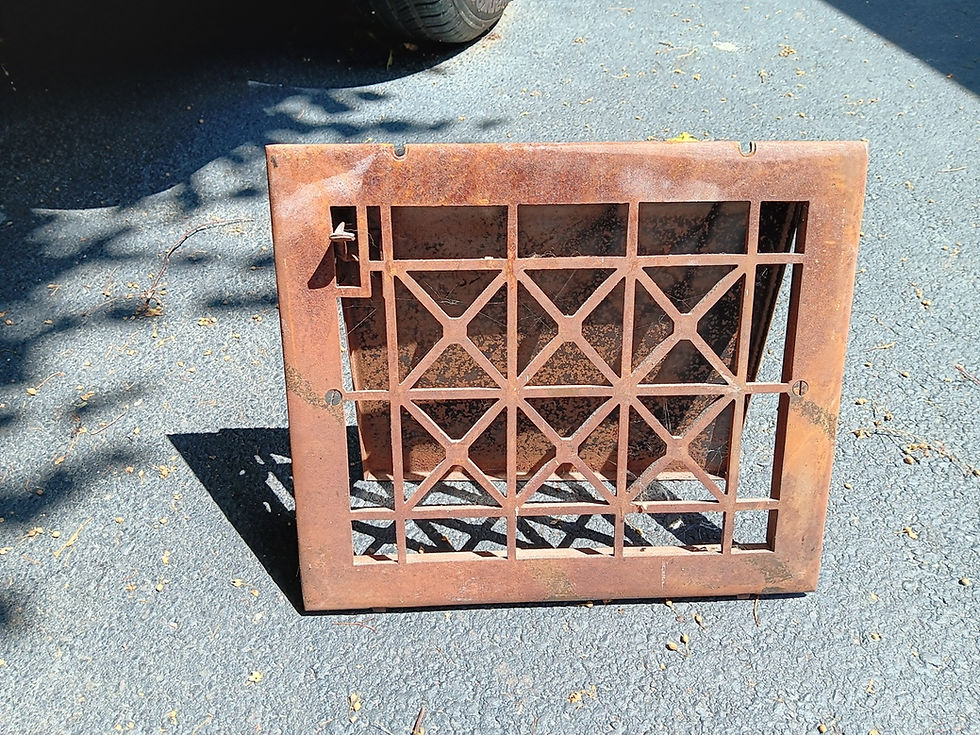Ideas from Ed: Unholey Adventurer (Volume 4, Issue 11)
- edwardpetrus

- Nov 1, 2021
- 3 min read
I think it’s a fair statement that professionals utilize high quality and specialized tools to make their jobs easier. Having the right tool for the right job can make all the difference between a smooth and uneventful project and one that was a “bear” to complete. Most do-it-yourselfers “get by” with ingenuity and (usually) taking longer to complete a task, because the old “time is money” statement doesn’t apply quite as rigidly. Having said that, I will add that sometimes acquiring a helpful tool isn’t very expensive. Such is the case with the tool in this month’s column.
I was asked to install a door handle/latch on an interior door which was already hung, but which for some reason didn’t have the needed through-holes for the knob mechanism and the door-edge button. This might not be something you’ll face, but this same procedure applies to installing add-on deadbolts, which IS very common. Sure, you can drill a hole with a holesaw after measuring, marking, trying to hold things in alignment, etc., but using a door lock installation tool is so much easier and you’ll wonder why you’ve never used one before. Here’s a picture of the doors I was working on:

The door on the left will only have a “dummy knob” that is not functional, and all it needed was the latch plate screwed in place on the door edge. The door on the right had neither the main knob hole nor the one in the door edge.


Instead of measuring up from the floor and marking things at a standard height, I installed the right-hand door hardware to match the receiver on the left one.
Most doors measure 1 3/8” or 1 3/4” thick. If you’re working on an antique door, all bets are off. Modern knobs are set away from the door edge either 2 3/8" or 2 3/4” to the centerline of the hole. Most knob kits are adjustable so that you can change the setback either for personal preference, to match other installations, or for clearance around an obstruction. Here’s the real “star” of the show, and the inspiration for this column:

This door lock installation kit includes a “jig” for locating the holes and the correct size holesaw and mandrel. It’s very inexpensive because it’s made of a hard plastic. Don’t expect it to last forever but it will perform well for most users. The “ears” on the jig remove and can be rotated end-to-end as well as flipped to offer the choice of either door thickness noted above, as well as either offset. Here are close-up views of one of those ears:


The jig is attached to the door edge at the appropriate height with two screws. Those screws are at the same location where you’ll likely chisel a mortise as a latch plate recess. (Some knobs can be installed without a mortise, and in that case, you’ll need to fill in the holes.) Here’s the jig in a test fit on the door:

From then on, it’s just a matter of securing the jig, chucking the holesaws into your drill and making the needed cutout and hole:


As I’m sure you already know, for the big hole you should drill halfway through from one side and then switch to the other side, to minimize splintering when the saw pokes through.


This project really couldn’t be more straightforward. I’m not showing the actual knob installation because the details vary from manufacturer to manufacturer. Read the directions that come with the knob (or the deadbolt) before you cut the holes!
I hope all your projects go well. Thanks for reading, and happy restoring!
Ed
If you’d like to download a PDF of this “Ideas” column, click here:




Comments